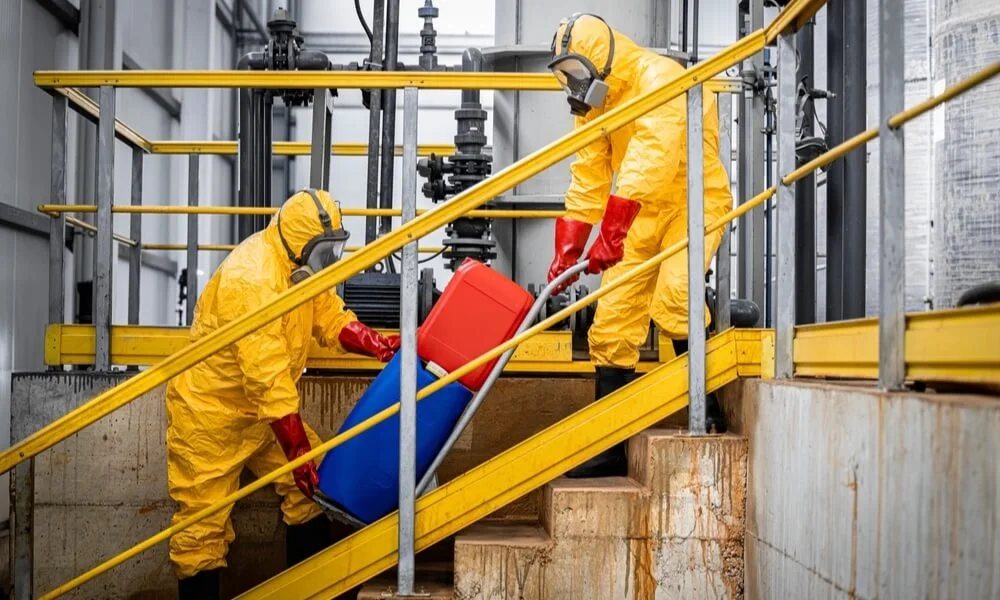In today’s fast-paced industrial world, hazardous materials, commonly called HAZMAT, are an intrinsic part of our daily lives. From the gasoline that fuels our cars to the chemicals that disinfect our homes, these substances, while crucial, come with inherent risks. But what exactly qualifies as HAZMAT? Why is it essential for professionals to undergo specific certifications and training when dealing with these materials?
This blog delves deep into the realm of HAZMAT, demystifying its meaning, showcasing common examples, and emphasizing the significance of certification and training. Whether you’re a seasoned professional looking to brush up on your knowledge or a curious reader wanting to understand more about the materials that subtly shape our world, this comprehensive guide will enlighten and inform you. Dive in and explore the intricate landscape of HAZMAT.
What Does HAZMAT Stand For? Definition and Meanings
HAZMAT Stands For “Hazardous Materials.”
Definition
Hazardous materials are substances in quantities or forms that may pose a reasonable risk to health, property, or the environment. They can be chemicals, substances, pathogens, or certain types of equipment that can harm people, other living organisms, property, or the environment if not handled or stored properly.
Meanings
- Health Hazards: These materials can cause harm when inhaled, swallowed, or come into contact with the skin. They can be toxins, carcinogens, or irritants and can cause both acute and chronic health issues.
- Physical Hazards: These materials present a physical risk rather than a health risk. This could be due to the material being flammable, explosive, reactive, or corrosive.
- Environmental Hazards: Materials that can threaten the environment, such as pollutants that could contaminate water sources, harm wildlife, or disrupt ecosystems.
In everyday contexts, HAZMAT might refer to:
- Transportation: When HAZMAT is transported, it requires special precautions labeling and may only be carried by those with a special certification due to the risks associated with potential spills or accidents.
- Occupational Safety: Workers in industries that handle hazardous materials must follow specific safety procedures and might require special training or protective equipment.
- Disposal: Disposal of hazardous materials is strictly regulated to prevent contamination and harm to people or the environment. Improper disposal can lead to legal consequences.
- Emergencies: HAZMAT teams are specialized groups that respond to hazardous materials emergencies. They’re trained to handle spills, leaks, or other incidents and mitigate risks.
Knowing and understanding HAZMAT is crucial in many industries to ensure safety, protect health, and prevent environmental damage.
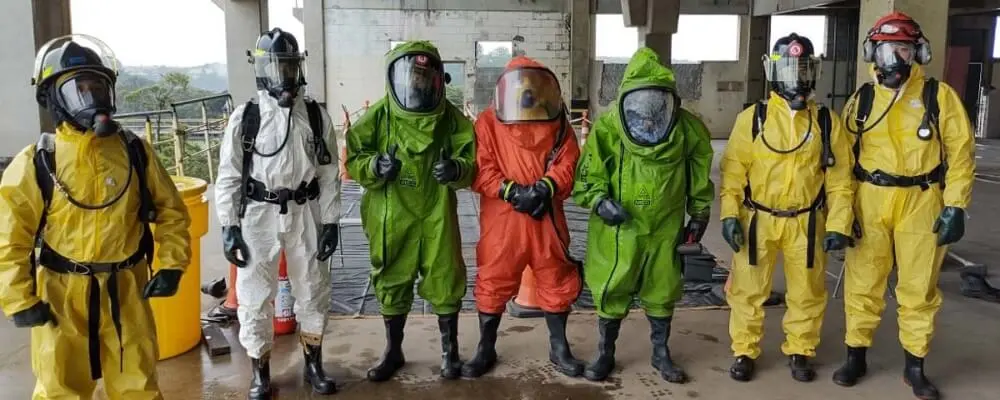
Different HAZMAT Examples
Hazardous materials (HAZMAT) can be classified into various categories based on their properties and hazards. Here’s a breakdown of different types of HAZMAT, along with examples for each:
Flammable/Combustible Materials:
- Gases: Propane, hydrogen, and methane.
- Liquids: Gasoline, ethanol, and acetone.
- Solids: Magnesium, sodium, and certain types of dry hay or grain (under certain conditions).
Explosives:
- Primary Explosives: Lead azide, detonators.
- Secondary Explosives: TNT, C-4.
- Blasting Agents: ANFO (ammonium nitrate/fuel oil mixture).
Gases:
- Toxic Gases: Chlorine, ammonia, and hydrogen sulfide.
- Inert Gases: Argon, helium, and neon.
- Oxidizing Gases: Oxygen and ozone.
Toxic/Poisonous Materials:
- Inhalation Hazards: Mustard gas, sarin, and phosgene.
- Liquids: Cyanide solutions, mercury, and pesticides.
- Solids: Arsenic, lead compounds, and asbestos.
Oxidizers and Organic Peroxides:
- Oxidizers: Potassium nitrate, hydrogen peroxide (in high concentrations), and perchlorates.
- Organic Peroxides: Benzoyl peroxide, di-tert-butyl peroxide.
Radioactive Materials:
- Uranium, plutonium, and certain medical isotopes.
Corrosives:
- Acids: Sulfuric acid, hydrochloric acid, and nitric acid.
- Bases: Sodium hydroxide, potassium hydroxide, and ammonia.
Pathogens/Biological Hazards:
- Bacteria, viruses, and other microorganisms can cause diseases such as anthrax, tuberculosis, and certain strains of influenza.
- Medical waste which may contain traces of infectious agents.
Miscellaneous Hazardous Materials:
- Environmental Hazards: PCBs (polychlorinated biphenyls), certain pesticides, and asbestos.
- Sensitizers: Isocyanates, certain dyes.
- Carcinogens: Benzene, asbestos, certain dyes, and resins.
Etiologic agents:
- Pathogens like viruses, bacteria, prions, and fungi can cause disease in humans or animals.
Reactive Materials:
- Water-reactive substances: Sodium metal, potassium metal.
- Air-reactive substances: White phosphorus.
- Self-reactive substances: Certain organic peroxides.
This list provides an overview of the types of hazardous materials that might be encountered. It’s important to note that within each category, there’s a wide range of materials with varying degrees of hazard. Proper handling, storage, transportation, and disposal are crucial to prevent accidents and exposures.
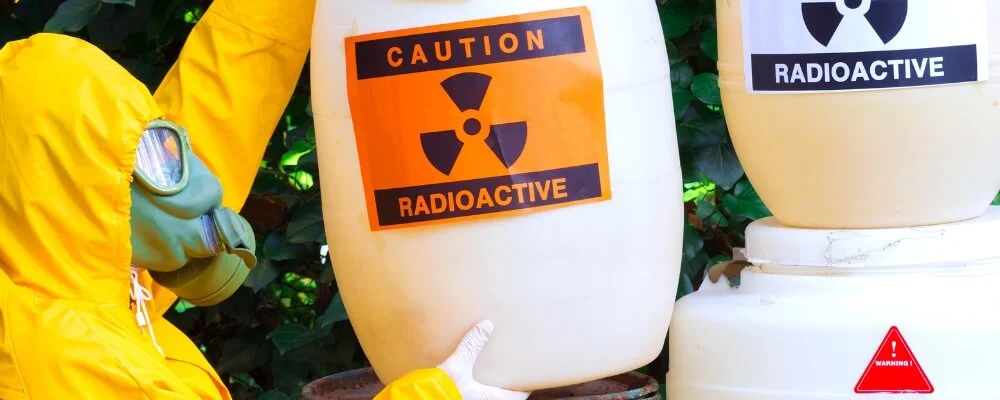
How To Receive Hazmat Certification
Hazardous materials, commonly known as hazmat, play a pivotal role in our daily lives, from fueling our vehicles to producing medicines. While these materials are crucial, their transportation comes with potential risks to the public, environment, and infrastructure. Thus, hazmat transportation demands stringent measures and certified professionals to manage these risks.
Obtaining HAZMAT Certification
Hazardous materials (HAZMAT) are intertwined with many facets of our daily lives, from powering our homes to facilitating major industrial processes. Their prevalence in various sectors of the economy necessitates their safe transportation to ensure public and environmental safety.
Given their potential risks, the Hazardous Materials Safety Administration mandates specific certifications for individuals involved in their handling and transport. Here’s a guide on how to secure this critical HAZMAT certification.
Why is HAZMAT Certification Essential?
The influence of hazardous materials is vast; they play pivotal roles in producing essential commodities, generating electricity, aiding construction, and countless other activities. However, their transportation poses inherent dangers to the public, the environment, and the handlers. Mistakes during transportation, often stemming from human errors, can have severe consequences.
Therefore, acquiring a HAZMAT certification ensures that individuals are adequately equipped with the knowledge and skills to handle these materials safely, safeguarding themselves, the public, and the environment.
Who Requires the Certification?
The Department of Transportation stipulates that any individual engaged in the handling, packaging, storing, transporting (which includes loading and unloading), or emergency response related to hazardous materials must hold a valid HAZMAT certification. This ensures they can identify potential risks and are adept at implementing preventive and reactive measures, minimizing the likelihood and impact of incidents.
Regulatory Framework for Hazardous Materials
Transporting hazardous materials commercially, whether by air, road, rail, or sea, must strictly adhere to the Hazardous Materials Regulations. Compliance entails:
- Using the appropriate packaging methods.
- Properly marking and labeling shipments to indicate their hazardous nature.
- Using the right shipping documentation.
- Ensuring materials are correctly placed during transportation.
Moreover, handlers must be versed in emergency responses, given the variable risks of different materials. Such knowledge is crucial during emergencies, guiding them on the right steps to contain a situation.
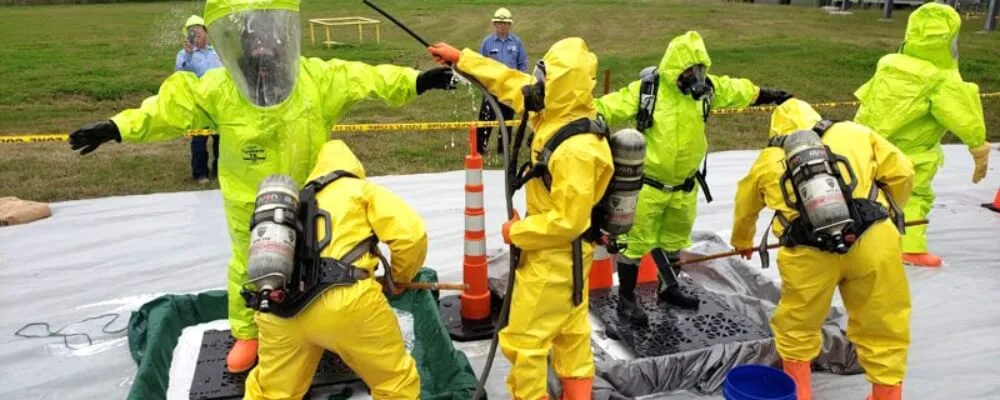
Steps to Achieve HAZMAT Certification
1. General Awareness Training
As an initial step, aspirants must undergo foundational training, which gives them a holistic view of hazardous materials management. Conducted by accredited HAZMAT consultants, this training imparts knowledge on:
- Identifying various hazardous materials.
- Understanding their classification system.
- Familiarity with the Hazardous Materials Table.
- Proper packaging, marking, and labeling techniques.
- Shipping documentation and the importance of segregation.
- Ensuring compliance with HMR requirements.
- Procedures for incident reporting and overarching security considerations.
2. Specialized Training
Beyond the basic training, individuals may need to attend other specialized sessions, like:
- Safety training to understand risks and mitigation measures.
- Security awareness to recognize and counter potential threats.
- In-depth security training focusing on a company’s specific security protocols.
- Function-specific training tailored to the unique requirements of specific job roles.
3. Online Certification
Online HAZMAT training courses, such as those offered by Compliance Training Online, are a viable option for those seeking convenience and flexibility. These platforms typically offer comprehensive training modules followed by assessments. Successful candidates can then download their certification and obtain a wallet card to prove their qualifications.
Securing a HAZMAT certification is not just a regulatory requirement but a testament to an individual’s commitment to safety and professionalism in handling materials that, if mismanaged, can have grave repercussions.
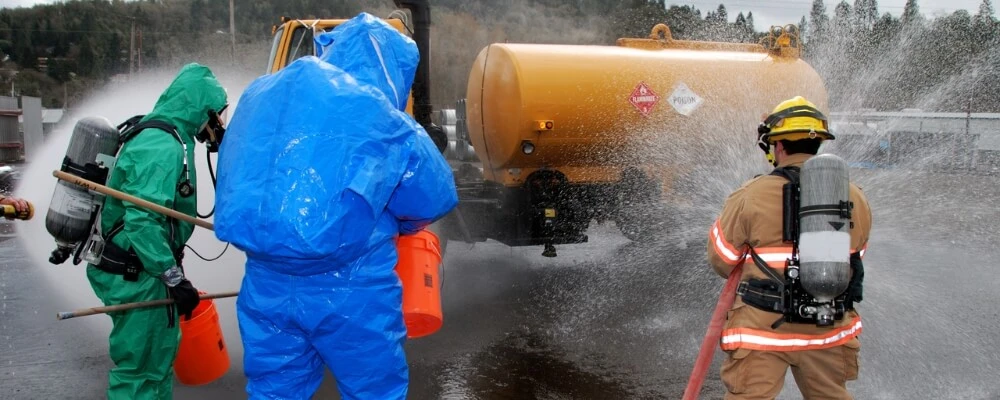
HAZMAT Training
HAZMAT (Hazardous Materials) training is essential for anyone involved in the shipping, handling, or transporting hazardous materials. Proper training ensures that these materials are managed safely and comply with regulatory standards to prevent potential risks to public health, the environment, and infrastructure.
Types of HAZMAT Training
1. General Awareness/Familiarization Training
This foundational training establishes a wide-ranging understanding of the Hazardous Materials Regulations (HMR). It is an introductory phase that helps employees grasp the overall landscape of hazardous material management.
The content primarily focuses on helping participants recognize and identify various hazardous materials. This is crucial because the nature of the risks and the required precautions can vary widely between different materials. Additionally, the training introduces employees to the HMR requirements, emphasizing the significance and intricacies of hazmat transportation.
2. Function-Specific Training
This training is designed to be tailored, offering detailed instructions specific to individual job functions. As hazardous materials handling is multifaceted, employees have responsibilities ranging from packaging and labeling to transportation and documentation.
For instance, someone responsible for packaging might need in-depth knowledge about the materials’ properties to determine the appropriate containment methods. At the same time, another employee focused on transportation might delve into shipment labeling and placarding. This training ensures each participant is well-versed in the specific tasks they will handle.
3. Safety Training
Safety is paramount when dealing with hazardous materials. The primary objective of this training is to ensure that employees are well-equipped to maintain their safety and those around them. The content encompasses various safety protocols, including using PPE to shield against potential hazards.
It also delves into emergency response procedures, ensuring employees know how to act swiftly and effectively if something happens. Additionally, the training emphasizes the importance of preventing incidents and providing insights into recognizing and mitigating risks associated with hazardous materials.
4. Security Awareness Training
Given the potential dangers associated with hazardous materials, their transportation can become a target for security threats. This training is formulated to impart an understanding of such potential threats. Employees are trained to spot signs of security risks, ranging from suspicious activities to vulnerabilities in the transportation process.
Employees become the first line of defense against potential security breaches by understanding how to counteract these threats. The training also underscores the importance of timely reporting suspicious activities to preempt any evil actions.
5. In-Depth Security Training
While Security Awareness Training provides a basic understanding of potential threats, the In-Depth Security Training offers a deeper dive into the company’s specific security strategies related to hazardous materials.
Employees get to familiarize themselves with the company’s detailed security plan. They understand the broader security objectives, the set procedures to achieve them, their roles within this structure, and the steps they must take in case of a security breach.
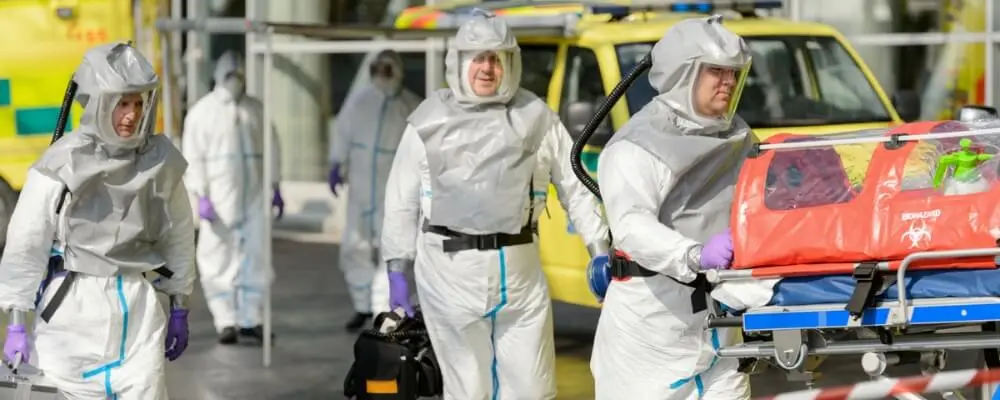
Duration & Frequency of Training
For those new to the world of hazardous materials or those transitioning to different job roles within the sector, initial training is imperative before they embark on their hazmat-related duties. However, the landscape of hazardous materials management is dynamic, with evolving risks and regulations.
Hence, all hazmat employees must undergo recurrent training at least once every three years to stay updated. The length of each training session can differ. Factors like the content’s intricacies, the job role’s specific nature, and stipulated regulatory mandates dictate the duration.
Certification & Documentation
Training is not just about participation; it’s about comprehension and competence. Once employees complete their required training usually receive a certification or proof of their newfound expertise. But the responsibility doesn’t end there. Employers have a mandate to maintain detailed records of this training.
Regulatory agencies can request these records during inspections. Typically, these records will contain crucial details such as the employee’s name, the date when the training was completed, a description or a copy of the training materials used, details about the training provider, and a certification validating that the training aligns with the required standards.
Conclusion
HAZMAT, or hazardous materials, are more than just terminologies or items we occasionally come across in news reports; they are pivotal components of the intricate web of modern society. From everyday household products to specialized industrial compounds, these substances weave into the fabric of our daily lives. But with their vast utility comes an undeniable responsibility.
The significance of proper HAZMAT handling, underscored by stringent certification and training, can’t be overstated. It ensures the safety of the environment and the individuals interacting with these materials.
By understanding HAZMAT’s meaning, recognizing its prevalent examples, and appreciating the depth of training required, we become more informed citizens, contributing to a safer and more knowledgeable world. As we conclude this exploration, remember that the essence of HAZMAT lies not just in its potential risks but in its responsible management, making our modern lives possible.

